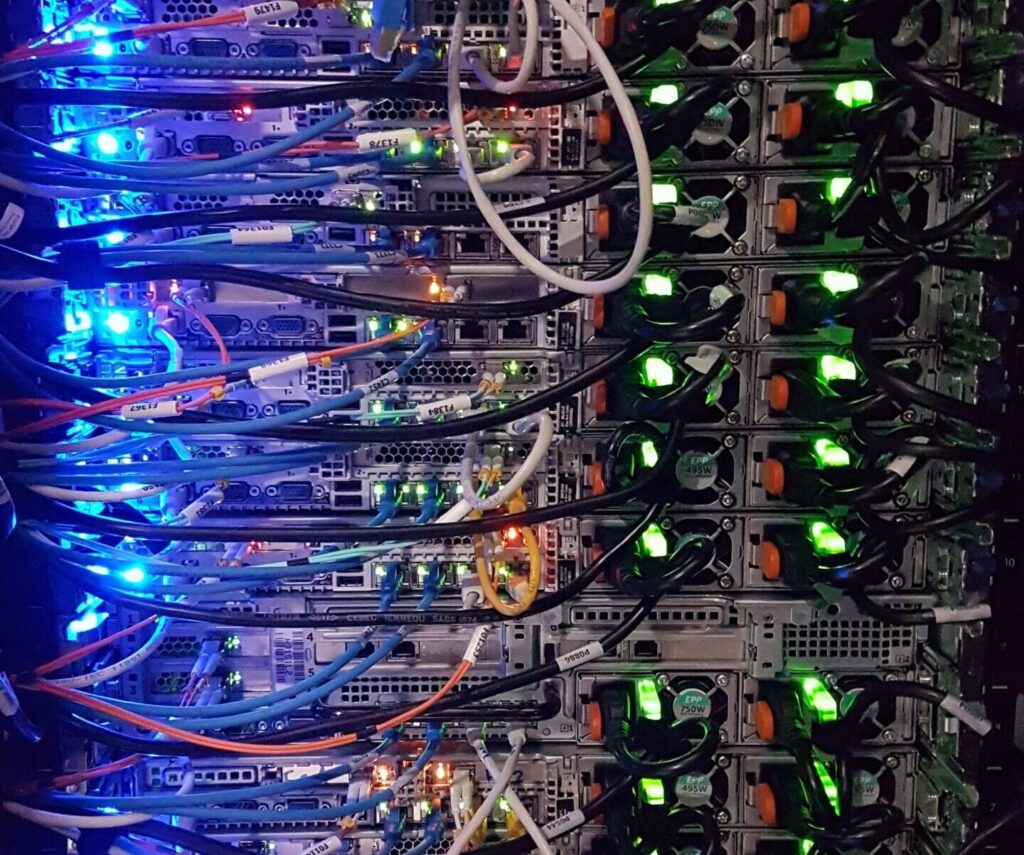Fiber optic and electromagnetic radiation have been around for a long time, but there is increasing concern about their potential effects. Many people believe that fiber optics and electromagnetic radiation are harmful to our health and that we should avoid them wherever possible. This article provides an overview of optic fiber and electromagnetic radiation and discusses the health concerns that are associated with them. Let’s get started!
How does optical fibre work?
Fiber optic cable is a telecommunications cable that uses light instead of electricity to send information between devices. The fiber optic cables are bundled into bundles and sent through the ground as strands, much like hair in your head.
The main benefits of fiber optics over traditional copper telephone wires include faster speed, excellent reliability, lower costs, and less weight. Fiber optics can also transmit data at higher frequencies than traditional phone lines, allowing more channels to be used simultaneously without interference.
So how does fiber optics work? The basic principle behind it is simple: Light travels in straight lines unless it encounters an obstacle. When an optical signal enters a bundle of fibers (or any other large mass), some will strike the sides of the bundle while others pass by without being affected; this differential response creates an electric field within the core of the bundle. This electric field causes photons traveling along different paths within the bundle to interact with one another more intensely than they would if there were no obstructions – hence why light waves cross boundaries more easily in fiber-optic cables than in wires made from metal or plastic substances.
Main applications of fiber optics
There are several different applications for fiber optics, and the list is constantly growing. Here are some of the main applications:
- Telecommunications: Fiber optics can be used to connect businesses and households across long distances in an efficient manner. This is especially important for countries with limited infrastructure or those who want to access global markets without latency issues.
- Surveillance and security: With advanced technologies such as CCTV (closed circuit television) and smart cameras, networks can be tightly secured with minimal disruption to operations. Experts can also easily analyze images captured via fiber optics for any potential threats or abnormalities.
- Data transmission: Optical fibers allow large amounts of data to travel over long distances at high speeds without losing quality or requiring extra hardware. This makes it ideal for transferring large files between servers, transmitting video streams over the internet, and more.
Thanks to its many benefits, fiber optics is quickly becoming one of the most popular technologies!
Is fiber optic cable safe?
Fiber optic cable is one of the world’s most commonly used wires. It has many benefits, such as being faster and more reliable than other cables, but is it safe?
Fiber optic cable is generally considered a safe choice for connecting devices in your home. The main reason is that fiber optics use light rather than electricity to transmit data. They are not susceptible to interference or signal loss like traditional wired networks. Additionally, because fiber optic cables travel through the ground instead of aboveground, like copper wires, they are less likely to be damaged by earthquakes or other natural disasters.
Fiber optic cable carries significant amounts of power, but this power is used for communication rather than causing harm to users. Fiber optic cables are safer than traditional wire-based systems regarding safety issues. In extreme cases, conventional wire-based techniques can easily overload, leading to electrical shock or fire. Fiber optics, by nature, are less susceptible to these kinds of accidents because they transmit data through tiny light waves instead of large electric currents.
What is electromagnetic wave used in fibre optic cables?
Fiber optic cables use electromagnetic waves to transmit data. The three main wavelengths used for fiber optic transmission are 850, 1300, and 1550 nanometers. These wavelengths are used in fiber optics because they have the lowest attenuation of the fiber.
Attenuation measures how much a signal is reduced as it travels through a medium. Low attenuation means the signal will travel further without being weakened or distorted than other waves. Therefore, these frequencies are ideal for carrying digital signals over long distances without losing quality.
Is fiber-optic cable affected by electromagnetic radiation?
There needs to be more clarity about whether or not the fiber-optic cable is affected by electromagnetic radiation. In short, the answer is no – fiber optic cables don’t carry any risk regarding electromagnetic radiation. Since such radiation does not occur in fiber optic transmission, there is also no evidence of its impact on human health through fiber optics.
So, what’s all the fuss about? Some people believe that exposure to high levels of electromagnetic radiation can cause harmful effects such as cancer and genetic damage. However, there isn’t enough evidence to support these claims. Studies have shown that exposure to even low levels of this type of radiation can negatively impact human cells and tissues. Therefore, businesses and individuals concerned about their safety must use precautionary measures when dealing with sources of EMF (electromagnetic field) pollution.
Is fiber-optic cable immune to electromagnetic interference?
Fiber-optic cable is a telecommunications cable that uses glass or plastic threads to transmit data, images, and video over long distances. This type of cable is often described as “immune to electromagnetic interference” because it has a special coating that blocks the transmission of harmful electromagnetic signals.
Both glass optical and plastic optical fiber offer complete immunity to interference like this because they are both made of electrically insulating materials. This means that the signals traveling through these cables are not affected by external electrical sources, such as power lines or appliances. EMI can cause problems with your electronic equipment and will reduce its performance. By using a shielded cable connection for your fiber-optic network, you can protect yourself from this type of interference and ensure optimal performance for all your devices.
